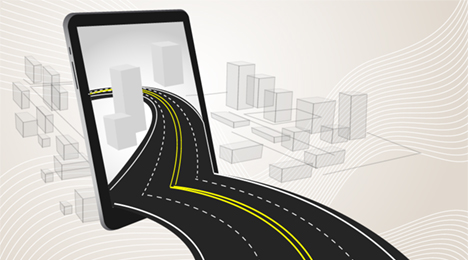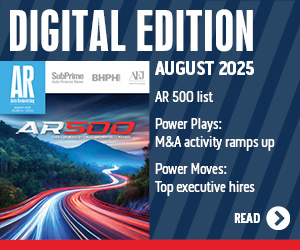Roadster debuts in-store app version of Express Storefront

Roadster said Wednesday it is now providing dealers with an in-store app extension of its Express Storefront ecommerce platform it launched this summer.
The company announced in late June that it was making its e-commerce services available to dealers as a white-labeled solution, called Express Storefront, that lets them put the entire car-buying process online, “from merchandising through home delivery,” Roadster said.
With the launch of the Express Storefront in-store app on Wednesday, that process can seamlessly transition from online to in-store, and vice versa.
Any salesperson in the dealership can use the iOS app to guide the customer through any stage of the car-buying process, including inventory browsing, incentives, pricing and financing, the company explained.
“What we’re really excited about now is that this software and process can touch every customer at the dealership with this iPad app, not just the folks that are looking at the website and interfacing from an ecommerce perspective,” Roadster chief operating officer Rudi Thun said in a phone interview.
How it works
The Express Storefront in-store app works off the same code base and software as the website version, Thun explained. It’s just a matter of “reskinning our website, removing the browser box and making it a full-screen experience.”
Along those lines, Roadster encourages dealers to use the iPad Pro with the 13-inch screen when they’re using the app with shoppers in their showrooms.
There are also price “customization” options for the salesperson who is working with the shopper in the showroom, Thun said.
The salesperson at the dealership can click on the “in-store adjustment” icon, which allows them to adjust various items and options in the pricing package in real time while they are with the customer. The salesperson can stay with the customer instead of having to go back to the desk to adjust pricing items, he said.
It gives them a quick way to compare options with the customer.
“When you’re in store, what’s really powerful about this for the product specialist that’s working in the showroom is that they can pretty much do anything they need to do with that customer to finalize the deal and not involve a sales manager, not have to go to the finance office, not talk to the GSM,” Thun said.
“Typically, six or seven people are touching a deal at the dealership,” he said. “This truly can be a one-to-one relationship and when you think about the cost-savings for the dealership, (the dealership is) not having to have six people touch the car, not having to spend $1,200 to $2,000 in sales costs, paying out the finance manager, paying out the salesperson, paying out all the different people that touch it.
“A product specialist can walk through all these options … they can do that very early in the process; they can do it later in the process — whatever the customer is ready for,” he said.
'Seamlessness' is key
Say the salesperson and the consumer have spent an hour together at the store, taking the car for a test drive and configuring the payment options, Thun said. The customer decides he or she isn’t quite ready to buy because they’d like to show the configured deal to their spouse.
There is a share button that allows them to send an email(s) and text message(s) with a deep link to the configured deal. The shopper would have the choice to finalize the deal at home or come back in the next day
“The key here’s the seamlessness,” he said. “It’s the same code-base whether you’re using the iOS app or the ecommerce version at home. And you can pick up where you left off very easily. So a lot of people are going to start in-store and then finalize this at home, using the same page.”
Or, he said, the inverse. The shopper has configured the deal at home but wants to come in to the dealership to test drive, see the interior, and so forth. Because the shopper can save the configuration, they can visit the store and pick up where they left off at home.
Building trust
Beyond helping to make it seamless instore-to-online and online-to-instore, it can help build trust in the configuration process.
“This is all about trust,” he said. “If you come into the dealership and it’s essentially a machine, a computer, an app that’s providing you with this pricing and all these different options, it engenders trust.”
It fosters confidence in consumers that they’re getting same price as someone else, since it’s a straightforward, automated numbers approach.
The relationship between the salesperson and customer then becomes about the product itself and not negotiation, Thun said.
Having items like price and financing built into the app allows the salesperson to focus on the product and the dealership’s “why buy” message
One of the changes Roadster has made is that the presentation of service and protection plans has been moved up in the process, where it had been shown after the person had clicked to buy.
Typically, the service and protection plans might not be at the end, when the customer might be weary of the process and ready to go home.
“They just don’t have the energy to evaluate these things like they really should,” he said. “Some of these products make sense, some of them don’t, for that customer. But many of them really do make sense.”
Allowing the customer to learn about service and protection plans early and on their time and terms gives the customer a chance to really digest and learn about these plans.
Expansion plans
Previously, Roadster had just been offering its services in California.
But looking forward, Roadster has plans to launch in “several states” within the next month.
“We’re going national relatively quickly here with this,” Thun said.


